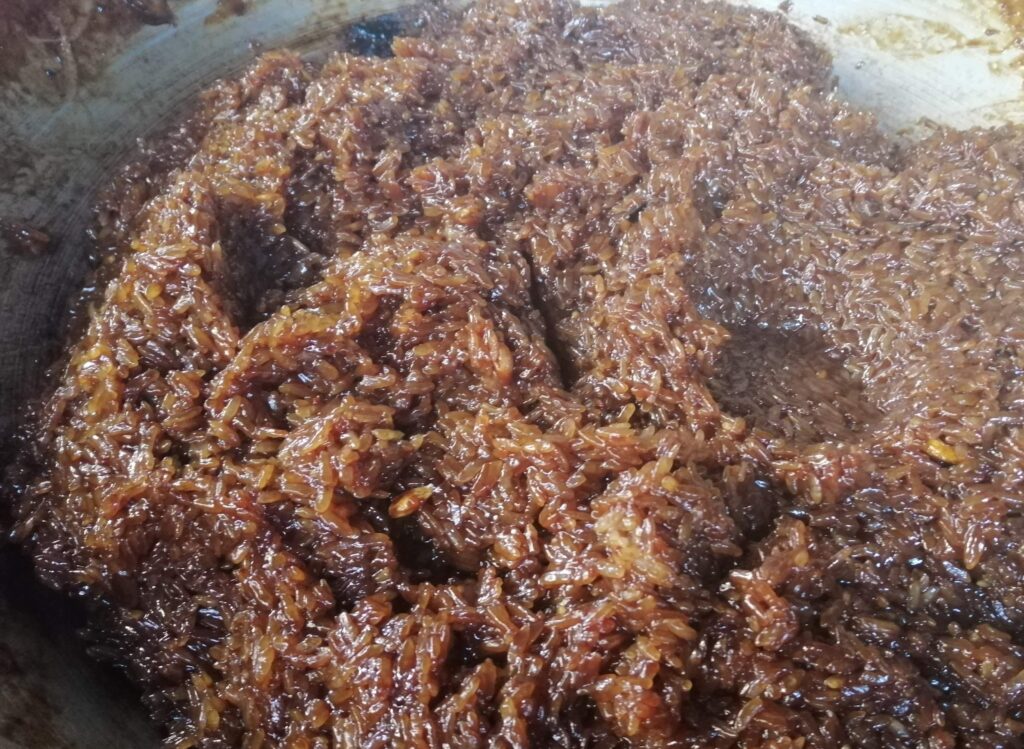CONSOLACION, Cebu– As the last school bell chimed, a surge of muted excitement overwhelmed students as they raced out of the school building with eager anticipation of the Kalag-Kalag break. This particular break holds special significance to Filipinos as it gives them the chance to commemorate All Saints’ Day and All Souls’ Day, time-honored celebrations deeply ingrained in Filipino culture.
For others, coming home after months of being away meant extra time for themselves to pursue their halted hobbies or sports. It is also a time wherein students, and even working employees treat this as their much-awaited day off, going home to their respective provinces, and finally lounging around, with nothing to think of and worry about even just for a few days.
It is a deserving treat for the hardworking, indeed.
But for others, the Halloween season is more than just relaxation. It also marks the welcome embrace of families, with those who have passed on, and those who are currently with us; by savoring the flavors of home-cooked ‘kakanins’ that many of us may have grown up with alongside some enhancements through the years.
READ: 8 things Cebuanos usually do during Kalag-Kalag
For this year’s “Kalag-Kalag,” CDN Digital transports you to one of the enduring customs of Cebuano culture as we delve into the celebration of ‘kakanins’ or ‘kalan-ons’ and explore their evolving popularity with the passing of the seasons.
Cebuano twist to the simple Kalan-on
For Cebuanos, ‘kakanin’ or ‘kalan-onon’ goes back to pre-colonial times. Miss. Louella Eslao–Alix, writer, and Cebuana food historian shares with CDN Digital her vast knowledge of how our most loved delicacies were discovered and how they survived through the years.
“We go back to pre-colonial times sa katong wa pa ta aria sa foreigners, we get this to the account of Pigafetta (Antonio) there was this ceremony that he wrote about that there were ‘babaylans’ the old ladies that were performing before starting the ceremony. They placed baskets of millet wrapped in banana leaves, ‘budbud‘ diba? and rice cakes as the bibingka,’ Alix shared.
Miss Alix said that Antonio Pigafetta, Ferdinand Magellan’s chronicler, pointed out in his journal the initial foods he encountered and consumed during his time in the Visayas, which included cereals like millet, sorghum, and panicum.
“We are a people who are used to offering kanang mga kalan-onon na made of what is available to us which is made of rice and millets or “kabog,” she then added.
What are Cebu’s preferred “kalan-onon” for Kalag-Kalag?

Puto Maya is simply unforgettable especially when paired with sweet mangoes and warm “sikwate” or native hot chocolate. | Photo by: Jessa S. Ngojo
Even before, Cebuanos were already particularly fond of “Puto Maya” a delicacy made from sticky rice, and coconut milk, and presented in banana leaf wrappings, traditionally paired with fresh mangoes and a steaming cup of “Sikwate,” the Cebuano equivalent to hot chocolate made from roasted cacao seeds. This dish holds a special place in Cebuano cuisine, making appearances both at celebrations and in everyday meals.
Along with Puto Maya, is its sweet and delectable cousins, “Biko” and “Binignit”. Biko is a rice delicacy that is sweetened with coconut milk and sugar syrup. The syrup is cooked until it turns into this rich caramel brown color, and then poured into the freshly cooked sticky rice. Definitely a must-try delicacy especially this All Souls Day!

Biko, a delicacy made from mixing cooked glutinous rice with rich sugar syrup.
Conversely, Cebuanos also take pleasure in preparing Binignit, a delightful sweet stew of coconut milk, kamote (sweet potato) saba (ripe banana), and landang (a processed starch product extracted from the inner trunk of the buli tree), among others that is more popular during the Lenten season.
Why prepare “kalan-on” during Kalag-Kalag?
Justina, not her real name, from Consolacion Cebu, shares with CDN Digital about her family’s tradition, which began when she was a child living in Sibonga and continues now that she has a family in Consolacion. It involves displaying kalan-on every Kalag-Kalag. She says she does this to guide the departed souls toward the afterlife with the comforting “sweetness” of the kakanins.
READ: Kalag-Kalag thoughts: Remembering loved ones, and a ghost story
“Ako mama pag sauna pa, gaingon gyud na nga ang kana daw mga hulmigas nga mag linya padung sa imong halad nga Biko kada Kalag-Kalag, mao daw na ang mga kalag na muduaw sa inyong panimalay. It’s either mga kaliwat na nimo nga nangamatay na or mga nasaag nga Kalag nga wala pa kahibaw asa ilang padulngan. Mao nang mag pa misa or mangadyi gyud ta basta Kalag-Kalag,” she shares.

Puto, Palitaw, Kutsinta, Sapin-Sapin, and Budbud are also popular at events like birthdays. | Photo by Jessa Ngojo
Even though Alix approves of some urban beliefs with our local kalan-ons, she says that it is not only because of superstitious beliefs that inspired Cebuanos to continue making kalan-ons, but also to serve these during the holidays and special occasions. She said this practice evokes a feeling of nostalgia made more tangible with food.
“I guess it’s our belief in our connection with the afterlife, diba, we commemorate this day because we think it’s a special day when the souls of our loved ones are allowed to come back to earth and visit us in any form, […] but Social media and technology has stopped us in enjoying our time together. During Kalag-Kalag, we also have the time to spend with our family through cooking delicacies like kakanins,” Alix said.
Can ‘kalan-ons’ last through the years? Alix says yes!
Although the widespread availability of instant foods has challenged the very existence of our beloved local delicacies, Miss Alix reassures that as long as the fundamental ingredients for creating ‘kalan-ons’ are sourced locally, the tradition of making them will endure.
“Most of our sweet dishes noh in Cebu particularly, we have this thing for coconuts, as long as there are coconuts in the island, (the kakanin) would survive,” she added.
“Support local “merkados” and food stalls – Alix
Supporting local food stalls and micro-sellers of local delicacies is vital in preserving regional culture and flavors. These small businesses, often family-run, safeguard cherished recipes and traditions. By patronizing their products, we enjoy our heritage’s genuine taste and help boost local economies, Miss Alix said.
“Make the effort, or buy, contribute to the economy and buy local,” she added.
Alix also wants to make it known that is not too late to educate ourselves in making our own style of kalan-ons. This, she said, is our own little way of contributing to the preservation of kakanins nationwide.
“My only caution is to learn to know how to do it first originally before you can innovate. Afterwards, you can do things na to add to the original recipe. Most of us are too “cosmopolitan”; choosing international dishes and saying no to our local ones. Makalimot na ta sa atong kaugalingong pagkaon. Nationalism is just the memory of your childhood food, because if you’re out there, working somewhere, what will make you think of home first? It’s the thought of food that you enjoyed as a child. It’s the one that calls you back home.”

Miss Louella Alix (left), with CDN Social Media Specialist, Jessa Ngojo and CDN Multimedia Specialist Christian Dave Cuizon
READ: ‘Undas’ 2023: PNP dispatches over 27,000 cops; no info on road closures
By learning to make Filipino kalan-ons this Kalag-Kalag, we not only improve our cooking skills but also strengthen our bond with our culture and heritage. Being part of preserving these cherished traditions is one way of showing our deep respect for what we are as Cebuanos.
So, this Kalag-Kalag, as we enjoy these delicious treats and pass on their stories, we not only play a vital role in safeguarding our cultural legacy but also cultivate that beautiful feeling of nostalgia, of being at home, with family, and loved ones. As we take a bite of our favorite kalan-ons, we also share our story, our identity, our unique heritage, and our culinary artistry with the next generation. /rcg
RELATED STORIES:
Undas 2017: Manananggal sa probinsya, spirit of the coin, sanib, babaeng multo
Kalag-Kalag: Flowers, mananabtan, Dakong Krus in Calamba Cemetery
What some Cebuano athletes miss from pre-pandemic Kalag-Kalag


